What is a Storm?
A storm is a disturbance in the atmosphere that can result in strong winds, rain, snow, lightning, and other severe weather conditions. Storms can be caused by a variety of factors, including temperature changes, air pressure differences, and moisture in the air.
Types of Storms
There are several different types of storms, each with its own characteristics and causes:
- Thunderstorms: These are characterized by thunder, lightning, heavy rain, and sometimes hail. They are often accompanied by strong winds and can be localized or widespread.
- Hurricanes: Also known as typhoons or cyclones, these are large, powerful storms that form over warm ocean waters and can cause widespread destruction with high winds and heavy rainfall.
- Tornadoes: These are rapidly rotating columns of air that extend from a thunderstorm to the ground, causing extreme damage in their path.
- Blizzards: These severe snowstorms are characterized by strong winds, low temperatures, and heavy snowfall, leading to reduced visibility and dangerous travel conditions.
Staying Safe During a Storm
It's important to be prepared and stay safe during a storm. Here are some tips to follow:
- Stay indoors and away from windows during a thunderstorm or tornado.
- If you're outside during a storm, seek shelter in a sturdy building or vehicle.
- Listen to weather forecasts and warnings to stay informed about approaching storms.
- Have an emergency kit with essentials such as water, non-perishable food, flashlights, and first aid supplies.
- Follow evacuation orders if necessary during hurricanes or other major storms.
Study Guide
Here are some questions to help you study and understand the topic of storms:
- What is a storm and what are some common characteristics of storms?
- What are the main types of storms and what distinguishes each type?
- How do storms form and what factors contribute to their development?
- What are some safety tips for staying safe during a storm?
- Describe the impact of storms on the environment and human communities.
◂Science Worksheets and Study Guides Second Grade. Water Habitats
Study Guide Water Habitats
Water Habitats  Activity Lesson
Activity Lesson Water Habitats
Water Habitats  Worksheet/Answer key
Worksheet/Answer key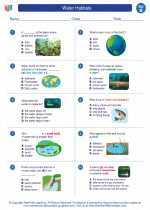 Water Habitats
Water Habitats  Worksheet/Answer key
Worksheet/Answer key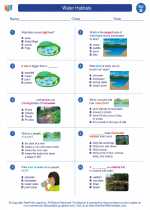 Water Habitats
Water Habitats  Worksheet/Answer key
Worksheet/Answer key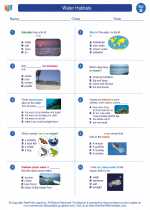 Water Habitats
Water Habitats  Worksheet/Answer key
Worksheet/Answer key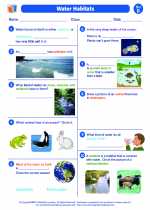 Water Habitats
Water Habitats  Vocabulary/Answer key
Vocabulary/Answer key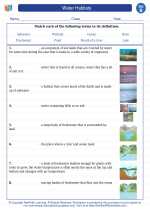 Water Habitats
Water Habitats  Vocabulary/Answer key
Vocabulary/Answer key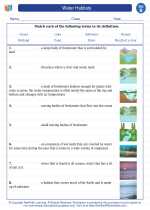 Water Habitats
Water Habitats 

 Activity Lesson
Activity Lesson
 Worksheet/Answer key
Worksheet/Answer key
 Worksheet/Answer key
Worksheet/Answer key
 Worksheet/Answer key
Worksheet/Answer key
 Worksheet/Answer key
Worksheet/Answer key
 Vocabulary/Answer key
Vocabulary/Answer key
 Vocabulary/Answer key
Vocabulary/Answer key

The resources above cover the following skills:
LIFE SCIENCE (NGSS)
Biological Evolution: Unity and Diversity
Students who demonstrate understanding can:
Make observations of plants and animals to compare the diversity of life in different habitats[Clarification Statement: Emphasis is on the diversity of living things in each of a variety of different habitats.] [Assessment Boundary: Assessment does not include specific animal and plant names in specific habitats.]